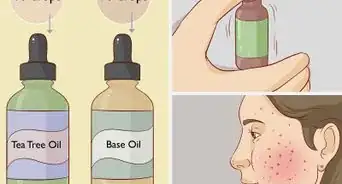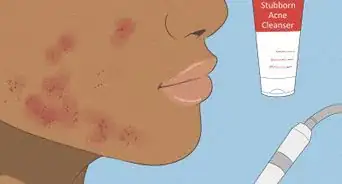This article was co-authored by Diana Yerkes. Diana Yerkes is a Skincare Professional and the Lead Esthetician at Rescue Spa in New York City, New York. With over 15 years of experience, Diana helps others with their skin care needs by incorporating natural and high-performing products and treatments into their routines while providing nutrition insights and educating clients on better skin care habits. Diana is a member of the Associated Skin Care Professionals (ASCP) and holds certifications from the Wellness for Cancer and Look Good Feel Better programs. She received her esthetics education from the Aveda Institute, the International Dermal Institute, and the Biologique Research Academy.
There are 24 references cited in this article, which can be found at the bottom of the page.
wikiHow marks an article as reader-approved once it receives enough positive feedback. This article received 16 testimonials and 100% of readers who voted found it helpful, earning it our reader-approved status.
This article has been viewed 1,587,117 times.
With so many skincare products on the market, choosing the right combination might seem overwhelming, but creating a skincare routine can be fun! To make sure that your routine works for you, you should first consider what type of skin you have. You can then put together a personalized regimen of cleansers, toners, moisturizers, exfoliants, and masks. Within a few months, you will be delighted by your beautiful skin!
Steps
Setting up a Basic Routine
-
1Remove makeup. If you wear makeup, you should remove it before you go to bed. Some cleansers claim to remove makeup for you, but these may not get rid of all makeup. You may want to have an extra makeup remover on hand. Use it before you cleanse your face.[1]
- Makeup wipes or removers are easy and convenient. Simply wipe off the makeup with a soaked pad until it is gone.
- Since eye and lip makeup can be harder to remove, you may want to use a special makeup remover designed for these parts.
-
2Cleanse twice a day. You should wash your face twice a day, once in the morning before you put on makeup, and once at night before you go to bed. You should also cleanse after sweating heavily.[2]
- Wet your skin with warm water but not hot water. Warm water helps remove dirt, but hot water will dry out your skin.
- Apply the cleanser and massage it onto your skin in upwards, circular motions. Remove completely, either by using a sponge or by splashing with warm water. Dab your face dry with a clean towel.
Advertisement -
3Apply toner after your cleanser. Toner should be applied once you have dried your face after cleansing. Pump a small amount of toner onto a cotton pad, and simply wipe over your face. Avoid the eye area. Let the toner dry on your skin. You do not need to rinse off.[3]
- If you have dry or sensitive skin, find an alcohol-free toner.[4]
-
4Moisturize your skin. Your moisturizer goes on after your toner absorbs. You can massage your moisturizer into your skin using upward circular motions to your face and neck. Alternatively, you can apply it to your clean palms and gently pat it in.[5]
- If you have dark or puffy eyes or if you are concerned about wrinkles around your eyes, you can use a separate eye cream. Gently pat the cream around your eye with your ring finger.
-
5Exfoliate once or twice a week. You should only exfoliate once or twice a week, or else you may cause damage to your skin. Be gentle as you exfoliate. Soft movements are all that are needed. Vigorously rubbing or scrubbing can be harmful.[6]
- There are many different types of exfoliation. You can use a wash-off scrub, a special mitt or sponge, or even a chemical exfoliant such as AHA or BHA.
- You may want to avoid exfoliating if you have active acne breakouts or hyperpigmentation.[7]
-
6Wear sunscreen everyday. Daily sun exposure can cause premature aging, hyperpigmentation, and other problems. Even if you don’t plan on going outside for long, put on sunscreen before you leave home. Your sunscreen should be SPF 30 or higher.[8] Apply it fifteen minutes before going outside. [9]
- Sunscreen should be applied as the last step of your routine after you have put on moisturizer but before you have put on any makeup.
Controlling Oily Skin
-
1Choose a foaming cleanser. Foaming cleansers work the best for oily skin as they remove oil gently. You only need a small amount for your whole face. Foaming cleansers come in gel, pump, and cream form.[10]
- Be careful only to wash your face twice a day. Washing too often can actually cause your skin to produce more oil and pimples.
-
2Look for ingredients that will fight acne. If you have acne-prone skin, then you should be using tougher ingredients that will reduce oil, shine, and pimples. Some common and effective ingredients include:[11]
- Benzoyl peroxide
- Salicylic acid
- Sulfur
- Alpha hydroxy acids such as glycolic acid or lactic acid
- Retinoid
- Witch hazel
-
3Apply a water-based moisturizer. Using a heavy moisturizer might make your skin even oilier. To combat this, use a water or gel-based moisturizer instead. These are moisturizers where water is listed as the first or second ingredient.[12]
-
4
-
5Avoid touching your face. Touching your face can transfer bacteria and dirt from your hands to your face. These can cause pimples. If you must touch your face, wash your hands thoroughly with soap and warm water first.[14]
- Never pick, squeeze, or pop your pimples. It hurts more, looks worse, and eventually may leave behind an ugly scar.
Soothing Dry and Sensitive Skin
-
1Rinse your face in the morning. Since cleansers can strip your skin of good oils, you do not need to use them in the morning. Instead, rinse your face with warm water and pat dry. Wash your face with cleanser at night.[15]
-
2Oil cleanse to remove makeup. Makeup removers often contain alcohol and other harsh ingredients that can dry out and irritate your skin. Oil cleansers are gentler than makeup removing wipes. Simply apply the oil to your dry skin, and wash off with warm water.[16]
-
3Use a serum before you apply moisturizer. A serum is a watery moisturizer that gives your skin an extra boost of hydration. Gently dab the serum onto your face with a cotton ball or clean hands. Let it absorb into your skin before you apply moisturizer.
-
4Apply a cream with oils. If you have dry or mature skin, oil-based products will not only add hydration but seal moisture into your skin. Check the label to see if oil is one of the first listed ingredients.[17]
- Mineral oil or petrolatum may be helpful if you have cracked skin or flaky patches.
- Rosehip oil and jojoba oil can help prevent moisture from leaving your skin.
-
5Pick soothing ingredients if you have irritation. Irritation and flaky skin can be common for both dry and sensitive skin types. To soothe your skin, pick products that contain moisturizing ingredients, such as aloe, chamomile, green tea extract, or Vitamin C.[18]
- Note that high amounts of Vitamin C can cause dryness. If you're experiencing dryness, try Magnesium ascorbic phosphate.[19]
-
6Avoid alcohol and other astringents. Alcohol can dry out skin and irritate sensitive skin. Read the ingredients of all of your products so that you can avoid alcohol. In addition to alcohol, you should avoid irritating ingredients like:[20]
- Witch hazel
- Peppermint
- Eucalyptus oil
- Fragrance
- Acids (note that Hyaluronic acid retains water and will not dry out your skin)[21]
Handling Common Skincare Problems
-
1Look for antioxidants to reduce signs of aging. Antioxidants can help prevent signs of aging such as fine lines and wrinkles. Common ones one include Vitamin C, retinol, tea extracts, grape seed extracts, and niacinamide.[22]
- While they are not antioxidants, alpha-hydroxy acids, such as glycolic acid and lactic acid, can help reduce the appearance of fine lines.
-
2Treat uneven skin tones with lightening ingredients. If you want to reduce hyperpigmentation or dark spots on your face, choose ingredients that will lighten these areas. Some products that may be effective include:[23]
- Kojic acid
- Vitamin C
- Vitamin E
- Arbutin
- Niacinamide
- Licorice Root Extract
-
3Use brightening products if you have dull skin. Dull skin is a common side effect of dry or mature skin. If you are looking for more of a glow, try to find products that contain Vitamin C, arbutin, niacinamide, and mulberry extract.[24] These products are more effective when used together, so feel free to mix and match.[25]
-
4Choose mild products if you have rosacea. To avoid flares, choose a mild cleanser and moisturizer.[26] You should avoid products that contain alcohol, menthol, peppermint, eucalyptus oil, or witch hazel.[27] For the best treatment, talk to a doctor about getting a prescription to treat your condition.
-
5Visit a dermatologist. If you are struggling to find products that work for your skin, visit a dermatologist. They can help you identify your skin type while pinpointing the underlying issues that may be causing your concerns. They may even give you prescriptions that can help.[28]
Weekly Skincare Routine
What Should I Avoid When Caring For The Skin On My Face?
Expert Q&A
Did you know you can get expert answers for this article?
Unlock expert answers by supporting wikiHow
-
QuestionCan men use this skin care routine?
 Sarah Gehrke, RN, MSSarah Gehrke is a Registered Nurse and Licensed Massage Therapist in Texas. Sarah has over 10 years of experience teaching and practicing phlebotomy and intravenous (IV) therapy using physical, psychological, and emotional support. She received her Massage Therapist License from the Amarillo Massage Therapy Institute in 2008 and a M.S. in Nursing from the University of Phoenix in 2013.
Sarah Gehrke, RN, MSSarah Gehrke is a Registered Nurse and Licensed Massage Therapist in Texas. Sarah has over 10 years of experience teaching and practicing phlebotomy and intravenous (IV) therapy using physical, psychological, and emotional support. She received her Massage Therapist License from the Amarillo Massage Therapy Institute in 2008 and a M.S. in Nursing from the University of Phoenix in 2013.
Registered Nurse Of course! Keep in mind that because of male hormones, the skin may be more oily (but, not always the case). The marketing of many skin care products are geared toward females; however, they can be used on males as well. Once you know your skin type you can lay out a routine. If you need help, you can see an esthetician or visit a dermatologist.
Of course! Keep in mind that because of male hormones, the skin may be more oily (but, not always the case). The marketing of many skin care products are geared toward females; however, they can be used on males as well. Once you know your skin type you can lay out a routine. If you need help, you can see an esthetician or visit a dermatologist. -
QuestionWhen you use facial exfoliator do you also need to use facial wash?
 Sarah Gehrke, RN, MSSarah Gehrke is a Registered Nurse and Licensed Massage Therapist in Texas. Sarah has over 10 years of experience teaching and practicing phlebotomy and intravenous (IV) therapy using physical, psychological, and emotional support. She received her Massage Therapist License from the Amarillo Massage Therapy Institute in 2008 and a M.S. in Nursing from the University of Phoenix in 2013.
Sarah Gehrke, RN, MSSarah Gehrke is a Registered Nurse and Licensed Massage Therapist in Texas. Sarah has over 10 years of experience teaching and practicing phlebotomy and intravenous (IV) therapy using physical, psychological, and emotional support. She received her Massage Therapist License from the Amarillo Massage Therapy Institute in 2008 and a M.S. in Nursing from the University of Phoenix in 2013.
Registered Nurse Yes, you do. If you are talking about using a device, such as an exfoliating brush or cloth, then you will definitely use a facial wash. A chemical exfoliator on the other hand, may require a different additional prep, usually after you have cleansed the skin. Follow the directions of the exfoliator you purchased. These articles may be helpful: http://www.wikihow.com/Use-a-Glycolic-Acid-Peel http://www.wikihow.com/Exfoliate-Your-Face
Yes, you do. If you are talking about using a device, such as an exfoliating brush or cloth, then you will definitely use a facial wash. A chemical exfoliator on the other hand, may require a different additional prep, usually after you have cleansed the skin. Follow the directions of the exfoliator you purchased. These articles may be helpful: http://www.wikihow.com/Use-a-Glycolic-Acid-Peel http://www.wikihow.com/Exfoliate-Your-Face -
QuestionCleansing is followed by toning and moisturizing. But do I need to do toning and moisturizing after exfoliating? And if yes, then I should exfoliate in place of cleansing?
 Community AnswerYes, there's no need to cleanse after exfoliating. You just have to tone and moisturize afterwards.
Community AnswerYes, there's no need to cleanse after exfoliating. You just have to tone and moisturize afterwards.
Warnings
- If a product causes redness, irritation, flaking, or swelling, stop using immediately. Rinse off with water if the product is still on your face.⧼thumbs_response⧽
- Do not apply products that contain an ingredient that you are allergic to.⧼thumbs_response⧽
References
- ↑ http://www.marieclaire.com/beauty/how-to/a7053/how-to-wash-your-face/
- ↑ https://www.aad.org/public/skin-hair-nails/skin-care/face-washing-101
- ↑ Diana Yerkes. Skincare Professional. Expert Interview. 16 April 2019.
- ↑ https://www.aad.org/media/news-releases/want-clearer-skin-reduce-acne-by-following-these-top-tips-from-dermatologists
- ↑ Diana Yerkes. Skincare Professional. Expert Interview. 16 April 2019.
- ↑ https://www.aad.org/public/skin-hair-nails/skin-care/exfoliation
- ↑ https://www.aad.org/media/news-releases/evaluate-before-you-exfoliate
- ↑ https://www.aad.org/media/stats/prevention-and-care/sunscreen-faqs
- ↑ http://www.skinacea.com/sunscreen/sunscreen.html#.WT2xasYpCUk
- ↑ http://www.skinacea.com/how-to/pick-right-cleanser-part3.html#.WT2nN8YpCUk
- ↑ https://www.aad.org/media/news-releases/dermatologists-advise-patients-that-over-the-counter-acne-products-can-have-benefits-and-a-place-on-their-medicine-shelf
- ↑ http://www.mayoclinic.org/diseases-conditions/dry-skin/in-depth/moisturizers/art-20044232
- ↑ http://stylecaster.com/beauty/best-face-mask-for-your-skin-type/
- ↑ https://www.aad.org/public/kids/skin/acne-pimples-zits/helping-stop-pimples
- ↑ Diana Yerkes. Skincare Professional. Expert Interview. 16 April 2019.
- ↑ http://www.skinacea.com/how-to/pick-right-cleanser-part3.html#.WT2tKsYpCUm
- ↑ http://www.mayoclinic.org/diseases-conditions/dry-skin/in-depth/moisturizers/art-20044232
- ↑ ref> http://www.mayoclinic.org/diseases-conditions/dry-skin/in-depth/moisturizers/art-20044232
- ↑ https://www.ncbi.nlm.nih.gov/pmc/articles/PMC3673383/
- ↑ http://www.thedermreview.com/what-does-toner-do-for-your-skin/
- ↑ https://www.ncbi.nlm.nih.gov/pmc/articles/PMC3583886/
- ↑ http://www.mayoclinic.org/diseases-conditions/wrinkles/in-depth/wrinkle-creams/art-20047463
- ↑ https://www.ncbi.nlm.nih.gov/pmc/articles/PMC3663177/
- ↑ https://www.ncbi.nlm.nih.gov/pubmed/19387580
- ↑ http://www.paulaschoice.com/expert-advice/skincare-advice/brown-spots-and-discolorations/skin-brightening-and-skin-lightening.html
- ↑ https://www.ncbi.nlm.nih.gov/pmc/articles/PMC3168246/
- ↑ https://www.rosacea.org/patients/skincare/index.php
- ↑ Diana Yerkes. Skincare Professional. Expert Interview. 16 April 2019.
About This Article
To establish an effective skincare routine, start washing your face with warm water and a facial cleanser once in the morning and once before bed. After you wash your face, apply a moisturizer to help keep your skin hydrated. You should also exfoliate your skin twice a week with a facial scrub or chemical exfoliant, which will remove dead skin cells so you have a healthy complexion. Also, apply sunscreen before going out in the sun to prevent sun damage. For help dealing with oily, dry, or sensitive skin, keep reading!





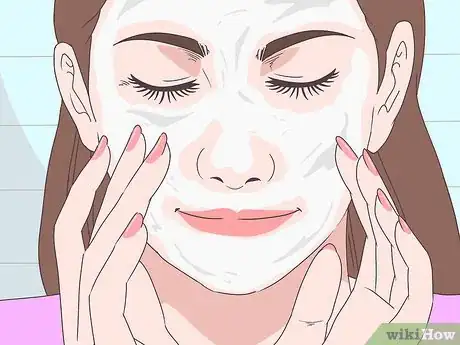

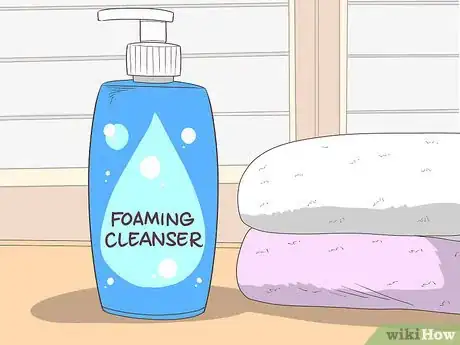

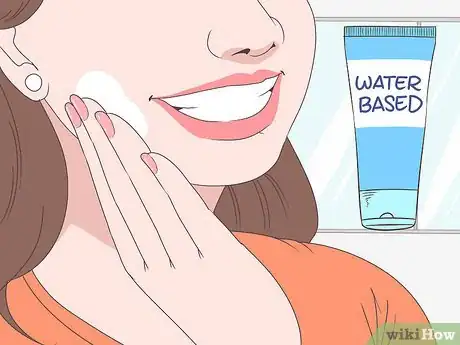





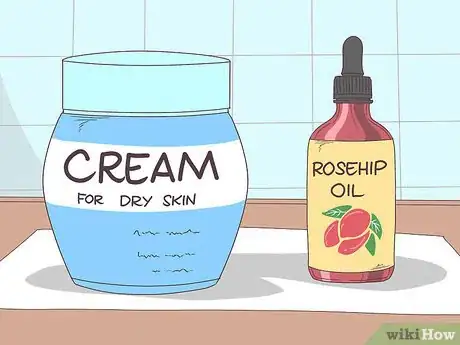

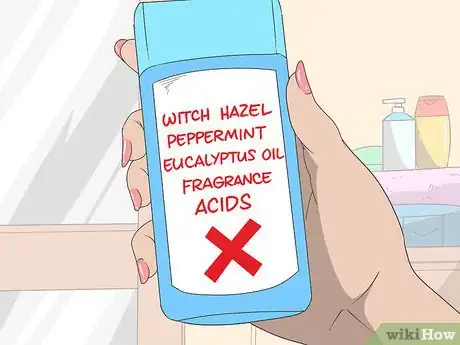

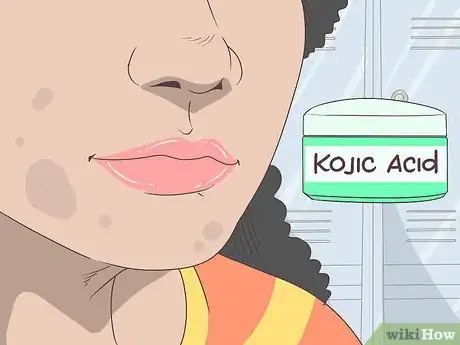
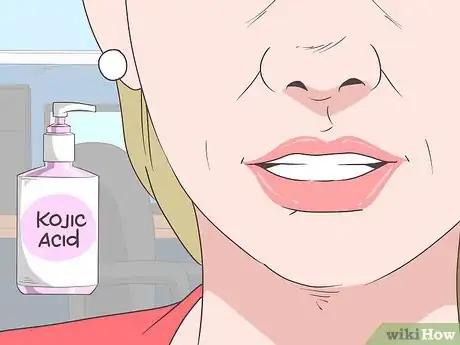
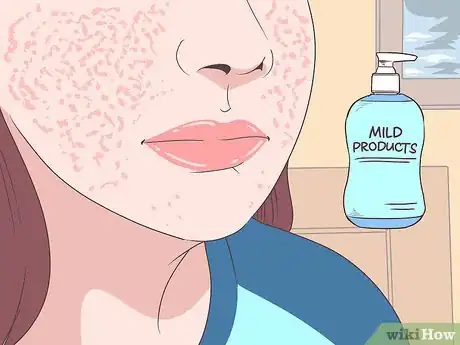


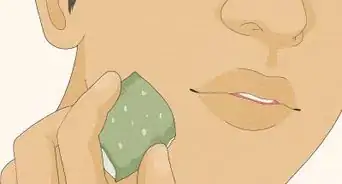




-Step-9-Version-2.webp)


-Step-1.webp)

